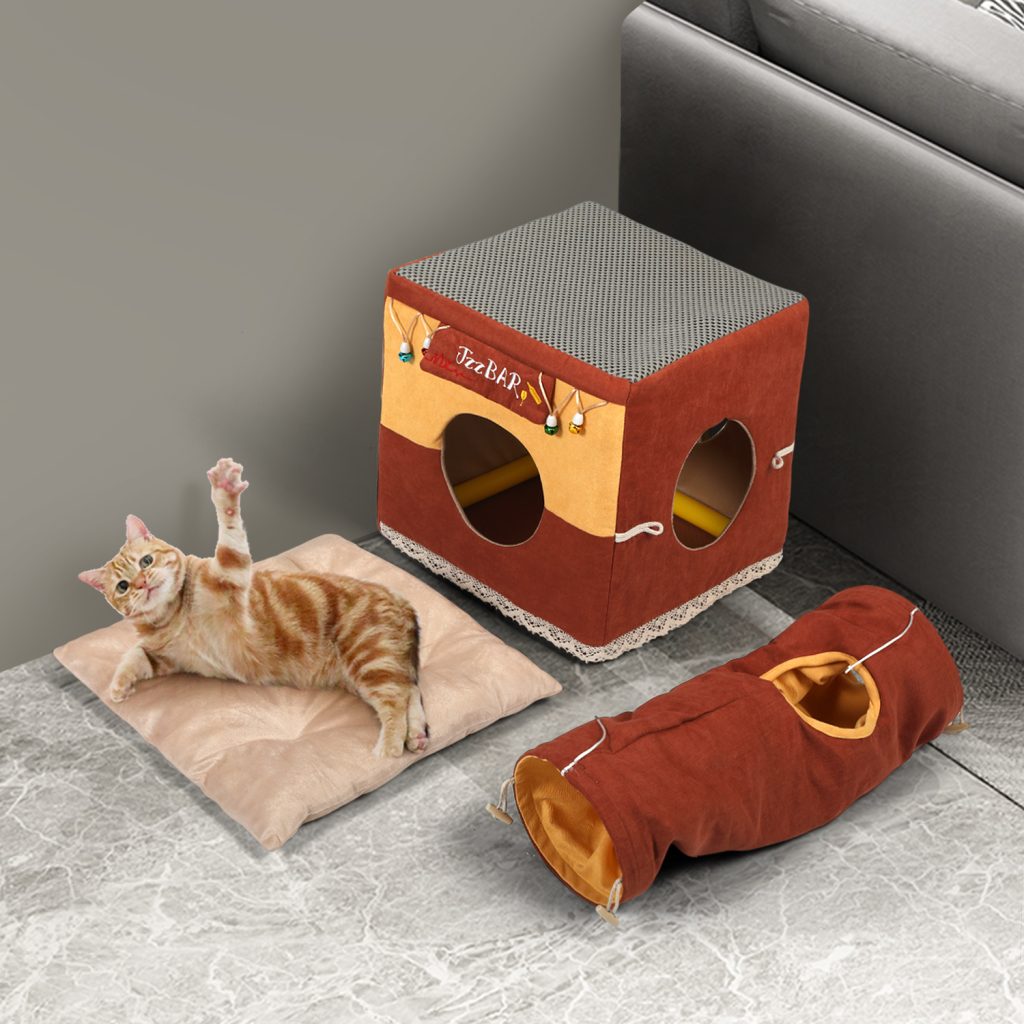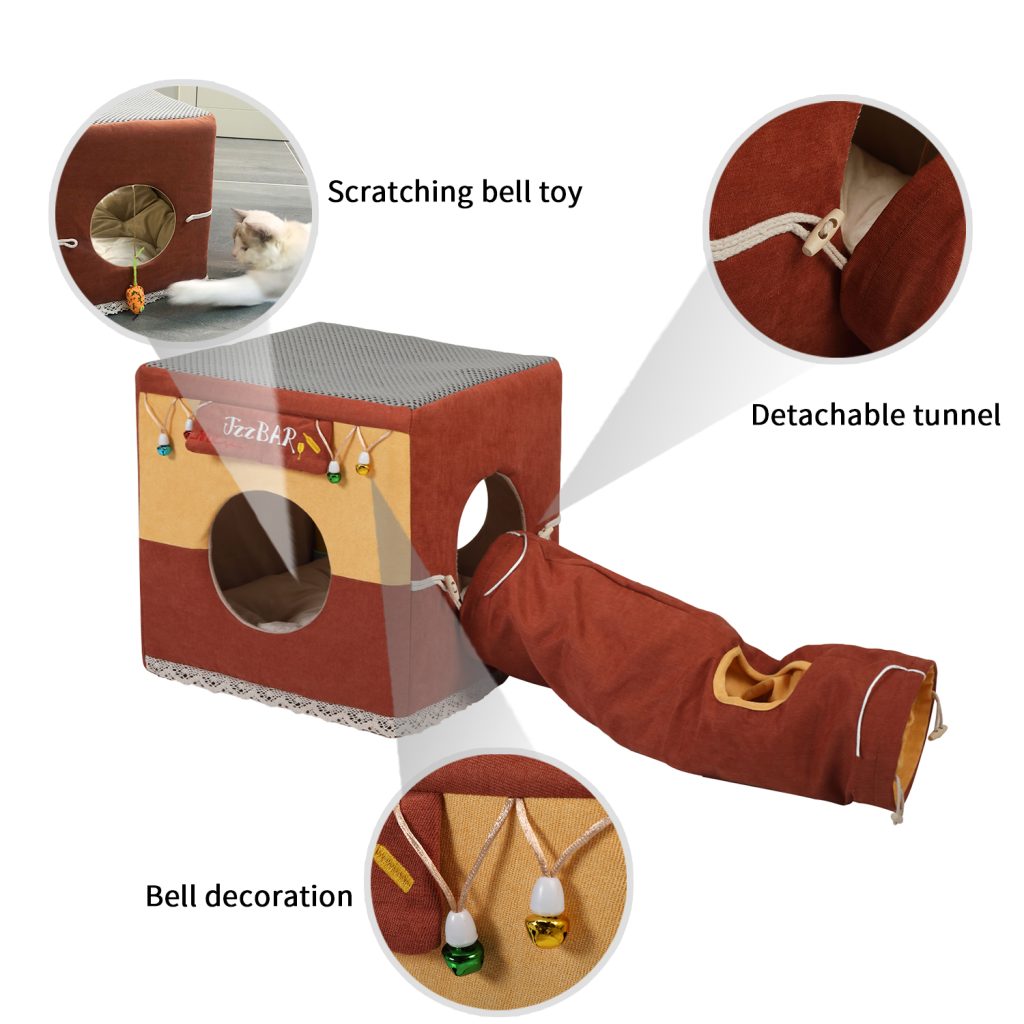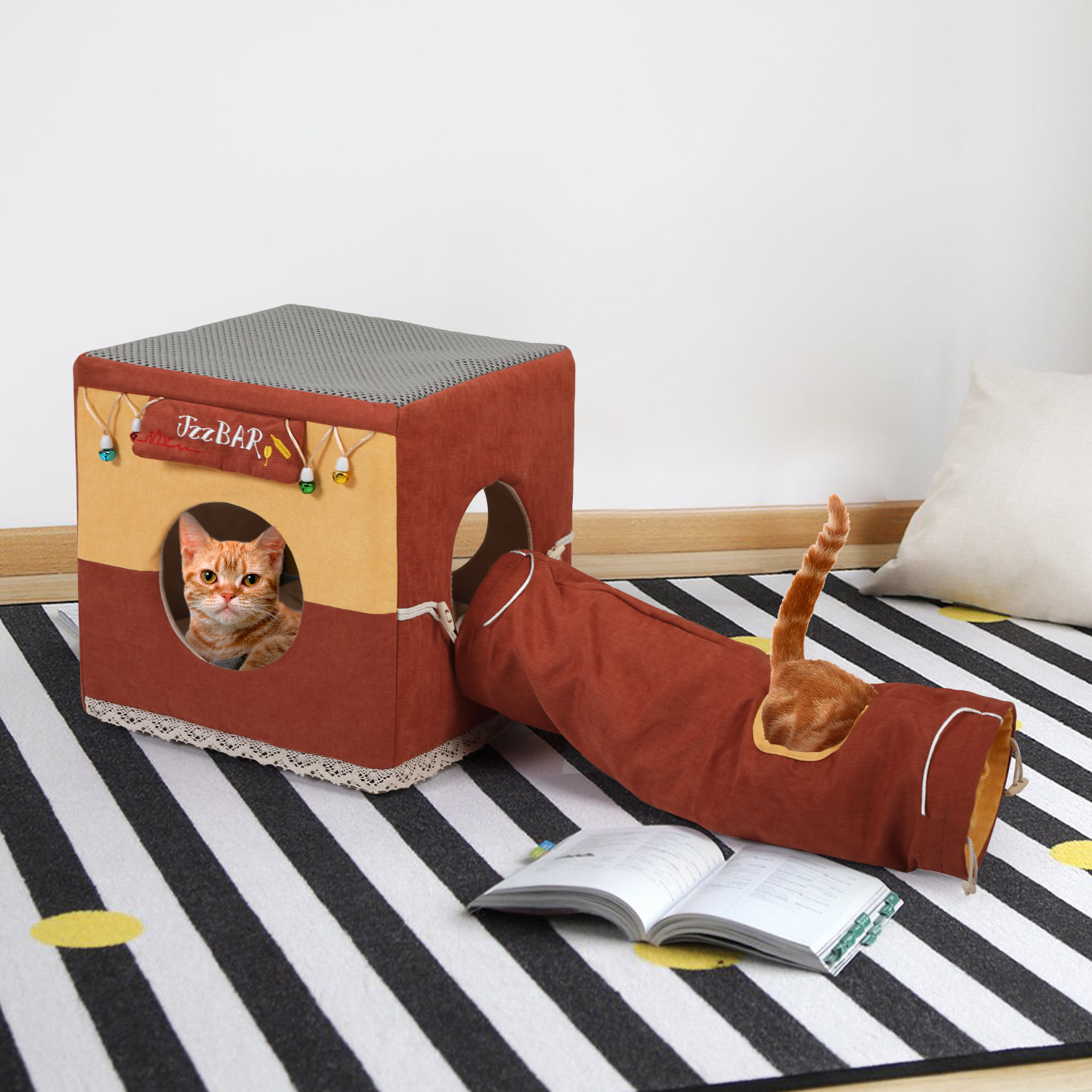Your cat can run, hide, and sleep inside cat tunnels, which are enclosed areas. A cat can spend countless hours amusing itself with them, but they can also reassure a cat that is worried or anxious. Cat tunnels can be used if you plan where to put them, spread them out so that frightened cats can explore the house, and then encourage your cat to play in them.
Part 1: Choosing Cat Tunnels
Buy tunnels. Cat tunnels come in a variety of styles that you can buy. Popular kitty cat tunnels include those that crinkle. Some cats enjoy and react to the noises the cat makes while it walks. You can purchase Y and T shaped components to build a complex network for your cat using some cat tunnels that can be joined to other tunnels at the end.
- Some cat tunnels feature openings in the top and dangling toys at one end. Others don’t have crinkly sides; they have soft ones.
Make cat tunnels with paper bags. Kitty tunnel bases are best made from paper bags. assemble some paper bags. To make the bag open on all sides, cut out the bottoms. To assist maintain the shape, take the edges and fold them back roughly one inch.
- To create a cat tunnel, tape the ends of the bags up against one another.
Create a box tunnel. Another fantastic homemade cat accessory is box tunnels. You can just use a long box if you have one. Verify that both ends are open. To keep the apertures clear, trim the flaps at each end.
- If you don’t have one long box, find several boxes of comparable sizes.
- For small cats, you can leave the top flap so your cat feels more comfortable in the box. For a lengthy cat tunnel, remove the flaps and tape the boxes together. The boxes can be taped together by using the flaps as well.

Part 2: Placing Cat Tunnels
Use tunnels to guide your cat to their necessities. Use the katzen tunnels to direct the cat to the items they need since they are intended to help the cat navigate the house. One series of tunnels should lead to the food, while another set should lead to the litter box.
- The tunnels will give the kitty more security, and maybe they’ll be able to access these locations on their own soon after.
Place a cat tunnel in the center of the room. Open places terrify a lot of cats. They might remain beneath furniture or skulk in closets. They only like strolling about the room’s perimeter, where the wall and furniture provide protection. Install a cat tunnel in the centre of the room to aid the cat in escaping into the open.
- The cat will utilize the tunnel to get through the room’s opening after it has retrieved it. They can feel safe inside the tube. Hopefully, once they begin stepping into the tunnel from along the wall, they’ll discover that the center of the room is a secure area for them.
Dangle a toy in front of the tunnel. When you play with tunnels, your cat can enjoy them as well. Additionally, playing in the tunnels might make scared or anxious cats feel more secure and at ease. Try putting a toy at the end of the tunnel and watching your cat approach it once it feels secure.
- If your cat feels confident, you can put a toy close to the entrance of a cat tunnel and allow them to utilize the tunnel to sneak up on the toy.
Interact with your cat in the tunnel during play sessions. You can play with your cat in the tunnel while seated on the ground without a toy. Get to the tunnel’s end and call the cat over to you. In order to play peek-a-boo with the cat, you may also hide outside the tunnel.
Use cat tunnels outside. For your cat to enjoy the sunshine and fresh air, some cat tunnels are made of netting or another transparent material. To keep the cat safely inside the tunnel and prevent them from escaping, these outdoor tunnels have coverings on the ends that you can close.

Part 3: Addressing Other Concerns
Let your cat get used to the tunnel. Some cats take to katzen tunnels right away. Some people won’t like it right away. They might interpret the peculiar object as being suspicious. Put a favorite toy or some treats inside the cat tunnel to encourage a cat that is hesitant to utilize it.
- If the cat hasn’t started utilizing the tunnel after a few hours, you might wish to put it up and try again later.
- Another choice is to leave the tunnel out at night. Under cover of night, your cat might be more likely to explore the tunnel.
- You should also ensure that the tunnel is secure and will not roll about. That may frighten some cats. Place the tunnel between two pieces of furniture or two heavy things to keep it in place and prevent it from moving around while the cat walks through it.
Try cat tunnels for scared or less confident cats. Tunnels can help frightened, new, or inexperienced cats leave their comfort zone. Place the tunnels near where your cat spends their time to assist them get acclimated to moving outside of the bedroom or under the sofa.
Use the tunnel when you want to. Cat tunnels are readily collapsible, allowing them to be relocated or stored whenever you desire. If you have a small space or don’t want the cat tunnel to be on the floor all the time, you can put it up until your cat is ready to use it.
